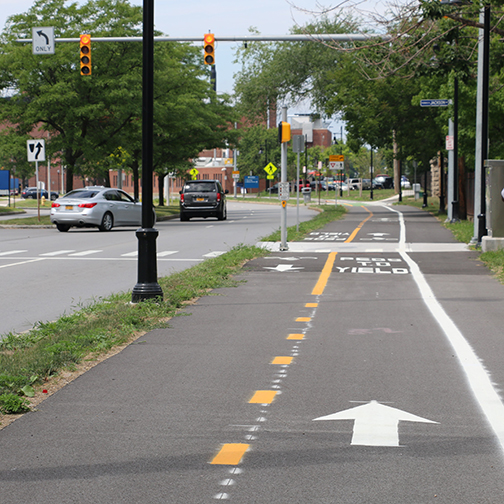Insights: Project Benefits Evaluation
Do you really understand the benefits of your project?
Benefit-side evaluation may be more important than ever as “shovel-worthy” projects are prioritized in the recovery economy.

2021 is finally here, and we enter this new year optimistic that the beginnings of recovery from the COVID-19 pandemic are in sight. While the long-awaited healing and freedom cannot come soon enough, we also face the unfortunate reality that the pandemic will continue to impact our society – and our global economy – for some time.
At C&S, we work with a wide range of public, institutional, transportation, and other clients that have been profoundly impacted by the pandemic and associated economic fallout. Simply put, our communities and institutions face difficult decisions as they work to sustain their services and facilities in the financially constrained pandemic era.
From an economic and planning perspective, the concept of benefit-side evaluation stands out as an increasingly relevant tool we can use to help ensure that limited resources are put to best use – and potentially help you attract additional funding.
Let me explain.
What is a project benefits evaluation?
A project benefits evaluation provides meaningful answers to the simple but essential question: What is gained as a result of your project?

While the traditional approach to design and construction provides well-developed and understood, information on project costs, knowledge, and measures of a project’s benefits are rarely granted serious treatment. Benefit-side knowledge can help ensure better outcomes and influence positive perceptions of your investment – advantages that carry heightened importance as we face a new reality of tightened budgets and a need to extract more “bang for the buck” from project investments. Additionally, funding programs (including possible stimulus programs) are increasingly likely to prioritize “shovel-worthy” projects that can demonstrate their value and worthiness for investment.
The first step in a project benefits evaluation is to consider the comprehensive nature of the project and identify the full range of positive outcomes resulting from it. Project benefits take a wide variety of forms – some benefit categories often associated with development projects include:
- Financial and economic
- Environmental
- Equity
- Operations and maintenance
- Resilience
- Time savings
- Health and safety
- Fiscal (public sector)
Once the types of benefits are identified, an analysis is conducted to answer the following questions:
- Who receives the benefits?
- What is the value of these benefits?
- When do the benefits occur?
Outcomes of the benefits analysis define the distribution, timing, and scale of project benefits generated across the various categories. Because there is so much variation in the nature of benefit categories, the information is characterized at different levels of detail that can include monetized dollar values, quantified measurements of scale, or qualitative description.
How is project benefit information used?

A project benefits evaluation has a number of applications, making this an important tool at a time when demonstrations of efficiency and value factor heavily into investment decisions. When considered at the alternatives evaluation stage, benefit information can be used to differentiate among alternatives and help prioritize resources.
Following are some key uses of project benefit information.
- Make the benefits case for your project: A well-rounded understanding of benefits gained allows you to build a data-driven, positive narrative around your effort. This can help to promote buy-in and position your work favorably for funding.
- Optimize project outcomes: Benefit-side analysis can be readily integrated with cost information to perform a benefit-cost analysis (BCA) during project design. This process allows for project adjustments that enhance associated benefits.
- Prioritize among investments: Benefit information can be compared across projects as a way to evaluate their efficiency and determine which investments provide the greatest “bang for your buck” and are “shovel-worthy”.
- Promote your values: Social responsibility is essential to the work of C&S and many of our clients, and a benefit evaluation covering sustainability metrics and/or equity (how benefits are distributed) provides a way to measure these positive dimensions of your work.
- Showcase your contributions: Project benefit information provides excellent marketing content that can be used to highlight the purpose and value of your work.
A project benefits evaluation allows you to understand and tell the whole story of your work and can help you make the most of your limited resources. The focus and use of this information can take a variety of forms, in line with your work and priorities.
The Takeaway

Working through the COVID-19 pandemic and entering a period of economic recovery, we at C&S and many of our clients are rethinking some of our long-standing practices and finding new ways to do more with less. Benefits evaluation offers an expanded understanding of our projects and work by measuring what is gained and supports a narrative explaining why it is so valuable.
It’s not just about what you put into a project, but also what you get out of it. And in order to achieve the right project, it’s essential to understand the full story.
Wondering how you can do more with less by examining the benefit side of your project? Contact Jeff Williams of the Land Use & Economics practice at jwilliams@cscos.com.